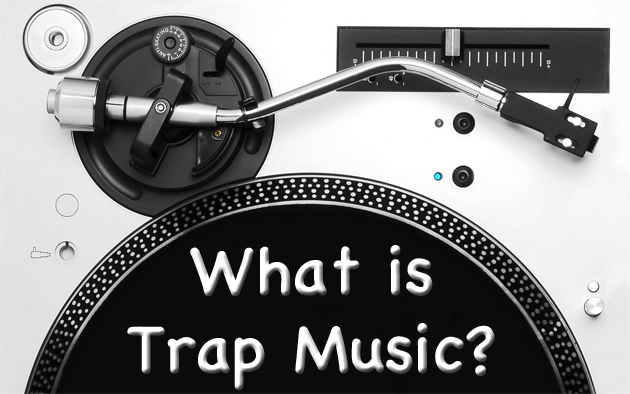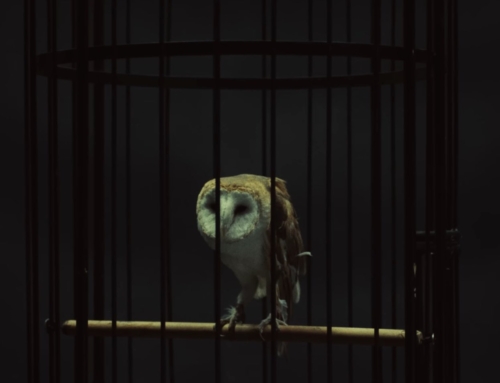 An electronic subgenre merging characteristics of hip-hop with house and bass music has been gaining momentum over the past year. D.C.-based festival Trillectro highlighted it, but the true starting ground is Soundcloud, where producers, both established and aspiring, drop mixes under the name of “trap.”
An electronic subgenre merging characteristics of hip-hop with house and bass music has been gaining momentum over the past year. D.C.-based festival Trillectro highlighted it, but the true starting ground is Soundcloud, where producers, both established and aspiring, drop mixes under the name of “trap.”
Trap, a fusion subgenre in the same vein as moombahton or disco house, blends the vocal styles of Southern hip-hop and crunk, albeit pitched higher, with the sounds of house, electro, and various bass music subgenres. Although greater attention has been paid to trap ever since Flosstradamus dropped a remix of Major Lazer’s “Original Don” in January 2012, its origins are less clear cut.
The Miami New-Times points to the 1990s as the starting point for trap, including its chopped up, slowed down style showing up on mix tapes by DJ Screw and lingo like “sippin’ sizzurp” (to describe the effects of taking codeine syrup). The term surfaced in the mainstream in the early 2000s, they go onto indicate, with Southern hip-hop mix tapes, such as T.I.’s Trap Muzik and 1017 Brick Squad Records’ Trap-A-Holics series from Gucci Mane and Waka Flocka Flame.
But, Complex, in profiling the emerging subgenre in 2012, claims trap is forced: two disparate club genres, and their respective audiences are being merged together, while the origins of the name “trap” – it means the location and character of where drugs are sold – are being glossed over and misappropriated by ill-informed EDM producers.
This dichotomy – of street culture as both an influence and the driving force behind how hip-hop is sold to the masses – pervades the entire genre, Complex claims, with writer David Drake stating:
Thus street rap’s core underlying dynamic, the structure that defines the genre, is a knotty, contradictory tangle of tensions between realism and performance, documentation against artifice, aspiration to escape the hood scraping against loyalty to your people, the pull of money and the ethical considerations in a world where the social contract has been shredded.
Flosstradamus’ remix, as well as trap’s push by Diplo’s Mad Decent and Skrillex’s OWSLA Records, further accentuates this decades’ old theme.
Websites dedicated to the subgenre, as well, detail the split. RunTheTrap.com, for instance, describes trap as: one-third hip-hop, one-third Dutch house, and one-third dub. TrapArtists.com, on the other hand, focuses solely on the generally Atlanta-based hip-hop producers and production techniques.
But, based on the deluge of trap mixes surfacing on Soundcloud, you’d think that the subgenre was the latest dubstep – and, for U.S. EDM audiences, that’s how it’s being treated and marketed. Trap producers not associated with hip-hop audiences spin on Diplo & Friends, including Montreal-based Lunice, and European turntablists Birdy Nam Nam are being grouped in with dubstep for American audiences.
Houston-born producer Lotic, on the other hand, recently responded to the subgenre’s surging popularity in the U.S. by releasing somewhat tongue-in-cheek track “Origins.” As to why he put together this track, Lotic mentioned in an interview with Vice, “Much of the
Aside from Lotic, who else, hip-hop and EDM wise, should you be looking out for?
Southern Hip-Hop Producers
Tied to well-known Atlanta-based rappers like Gucci Mane, Young Jeezy, and Waka Flocka Flame are a long string of producers pushing the beats and flow of trap. Ones setting the stage for modern sounds while being inspired by earlier mixtapes include Shawty Redd, who saw his big break in 2007 by producing “Sensual Seduction” for Snoop Dogg; DJ Toomp, who, although producing since the late 1980s, garnered attention with T.I.’s “What You Know”; Zaytoven, a San Francisco-born, Atlanta-raised producer who has appeared on various Gucci Mane trap mixtapes like 2005’s Trap House, 2007’s Trap-a-Thon, and 2012’s Trap God; and Drumma Boy, a producer for the similar group of rappers who was considered one to watch at the end of the ‘00s.
This group of trap producers emerging at the end of the ‘00s already influenced a new crop, one who also stays within the realm of hip-hop while incorporating modern EDM sounds. If you haven’t heard of them already, some of these rising trap producers include Mike Will Made It, who produced Juicy J’s “Bandz a Make Her Dance”; Lex Luger, a 1017 Brick Squad producer behind Waka Flocka Flame’s “Hard in da Paint”; Southside, another 1017 Brick Squad producer who emerged this year on Watch the Throne and Gucci Mane’s Trap Back; and Sonny Digital, who produced 2 Chainz’s “Birthday Song.”
EDM Producers
Just as the last two years saw a surge of trap producers behind hip-hop tracks, a similar rise occurred in the EDM world, particularly on labels Mad Decent and OWSLA. Along with Lunice, and his group TNGHT with Hudson Mohawke, and Flosstradamus, there’s DJ Sliink, a Newark, N.J.-based artist that mixes trap into his sets of dubstep, moombahton, reggae, and house; prodigy Baauer, best known for Mad Decent track “Harlem Shake”; RL Grime, who garnered attention with EP Grapes, “Trap on Acid,” and bootleg mix of “Mercy,” which drew 120,000 Soundcloud views in two days; and CRNKN, a 20-year-old Los Angeles producer that, with the support of Diplo and Flosstradamus, switched from dance to bass music over the past year.
While these younger producers appear to be the face of the trap movement in EDM, older, more established acts and producers are crossing over or experimenting with the slowed down, choppy style of the subgenre. In addition to turntablist quartet Birdy Nam Nam, there’s Glasgow producer Rustie, better known for similar-sounding aquacrunk music and moombahton producer Dillon Francis.




